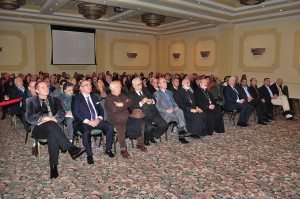The degradation, the humiliation, the callousness, the disregard for human life, the debasing of all that is decent about humans and treating others as mere chattel, as I watched this, I kept drifting from the movie, “Django Unchained,” to the description, given in Roupen Der Minasian’s Memories of an Armenian Revolutionary, of life in Turkish-occupied Western Armenia in the late 19th and early 20th centuries.

Of course, our ancestors were not slaves. A more apt term would be serfs. Nevertheless, they were at the mercy of local (usually Kurdish) chieftains and (usually Turkish) tax collectors who were free to do as they wished since we were second-class citizens whose word was not accepted in the (Muslim) Ottoman Empire’s courts because we were Christians.
The movie even came complete with the concept and role of a “black slaver” and “Uncle Tom,” both of which reminded of the despicable tax collector, Tomas Effendee, in Raffi’s novel, Khentuh (The Fool), which also does a fantastic job of describing the abominable conditions of Armenian life in that same era.
Unfortunately for us, the count continues: 1,500,001 (Hrant Dink, 2007), 1,500,002 (Sevag Balıkçı/Balukjee, 2011), 1,500,003 (Marissa Küçük/Kuchuk, 2011). While the descendants of American slaves still face many obstacles, lynchings or similar activities are a thing of the past. Unfortunately, Turkish society has clearly not yet matured that much.
This all came together for me at the Hrant Dink memorial held at the Organization of Istanbul Armenians’ center during Weekly Editor Khatchig Mouradian’s presentation about the crypto-Armenians of Turkey. These largely hidden, full, half, or quarter Armenians are still potentially subject to mistreatment if exposed. Mouradian also referred to the depravity of survivors—our parents’/grandparents’/great-grandparents’ brothers and sisters having to live in denial of their trauma, their whole lives under the yoke of the denialist state. How patently awful is that? And, what scars did that leave on our cousins—first, second, third?
The tantalizing, harrowing question Mouradian posed is, in effect, how do we integrate those survivors, and by extension their progeny, into our narrative of survival and rebirth?
Please, think deeply on this matter. It seems extremely profound to me.


Be the first to comment